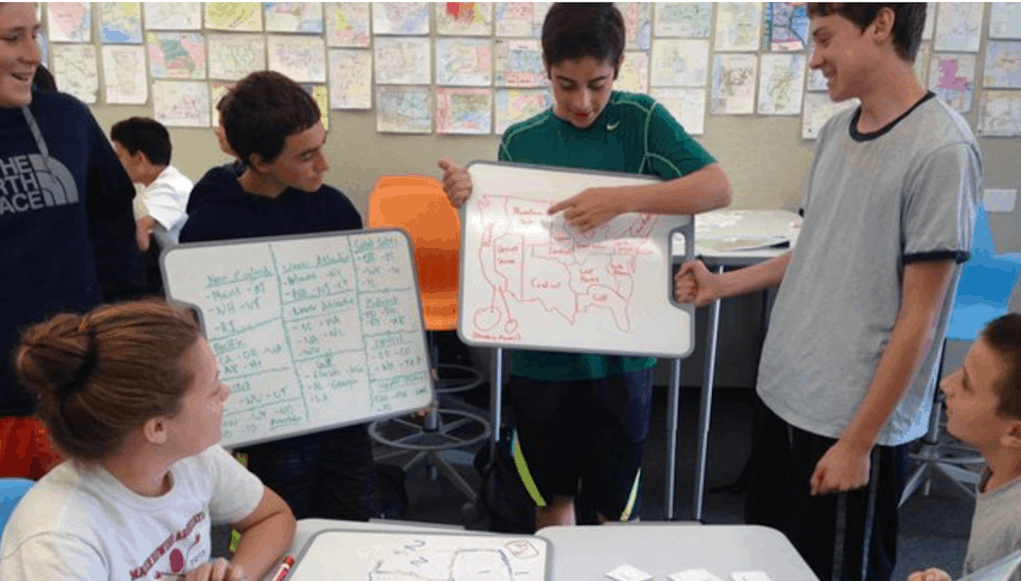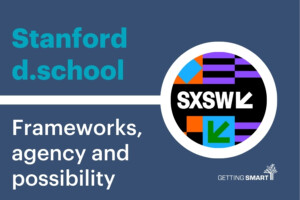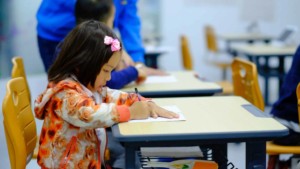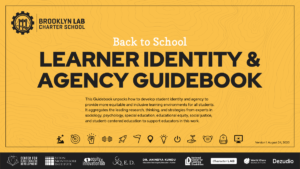Getting Students to Take Control

When considering the future of work, it is important to consider what still needs to be done to prepare future generations.
It is not a secret that everyone learns differently. In a world that is constantly changing—that is one thing that won’t. As EdReimaginged noted in their report, A transformational vision for education in the U.S., “the current system was designed in a different era and structured for a different society.”
So why is it taking so long to adjust to the times?
High school graduation rates in the U.S. are at an all-time high—rising 10 percent in a decade. However, according to a recent survey, only 45 percent of high school graduates felt “positively” about their college and career readiness.
In a book by Terry Doyle, Helping Students Learn in a Learner-Centered Environment: A Guide to Facilitating Learning in Higher Education, he explains that in conversations with educators about making institutions more “learner-centered” the question he often hears is “But how can we get the students on board?”
He argues that at the root of the quest for more learner-centered institutions lies an interesting paradox: “Students, the learners, aren’t convinced.” He goes on to explain that “students need to be persuaded that learning is the central purpose of their schooling.”
For centuries, the majority of kids who attend school do so for one reason: it is mandatory. Think back to when you were in school, now envision you were offered the following choices:
- You master the material and receive a low grade
- You don’t understand the material and receive a high-grade
Which would you choose? Sure, some would rather master the material, but the majority would aim for the higher grade. In order to transform the learning process from standardization to personalization, we need to help students shift their view of school away from focusing on grades to focusing on their personal self-growth. We need to show them they are not just there because they have to be.
Strategies to Get Students to Take Control
Getting students to “buy-in” and take control of their learning starts with seeing them as individuals and understanding each of them has different motives, beliefs and goals. Below are a few ideas to consider to help them start:
- HQPBL. Earlier this year, we introduced Framework for High Quality Project Based Learning. The Framework includes six criteria that are meant to serve as a baseline for educators, organizations, parents, and students: Intellectual Challenge and Accomplishment, Authenticity, Public Product, Collaboration, Project Management, and Reflection. Providing students with HQPBL experiences creates that feeling amongst them where they are pushing the boundaries of their learning to make connections to the world around them.
- Give Them Choices. According to a study by Hanover Research, “Student choice makes students active participants in their educations, thereby increasing levels of engagement. Notably, researchers highlight the fact that such autonomy is generally associated with greater personal well‐being and satisfaction in educational environments as well as in terms of academic performance.”
- Self-Assessment. Introducing self-assessment to students early on instills a baseline for them to build off in the future. Through self-assessment students are able to analyze their own strengths and weaknesses.
- Student-Led Discussions. What better way to get a student to buy-in to their learning than by trusting them enough to teach the material? Is this risky? Yes. But according to a study published in the journal Memory & Cognition “simply telling learners that they would later teach another student changes their mindset enough so that they engage in more effective approaches to learning than did their peers who simply expected a test.” High Tech High conducted an “experiment” that aimed to see if having peers lead the discussion made the lesson more accessible to students. They found that through student-led discussions, students gained confidence and became accustomed to addressing, building on, and challenging others’ ideas.
- Flipped Classroom. The flipped classroom intentionally shifts instruction to a learner-centered model in which class time explores topics in greater depth and creates meaningful learning opportunities, while educational technologies such as online videos are used to “deliver content” outside of the classroom. A flipped classroom gives students more control over their learning. By watching lectures online at home they are able to rewind, write questions, and learn at their own pace.
In October, XQ published a report we authored entitled, Show What You Know: A Landscape Analysis of Competency-Based Education. In our research, we found that educators are genuinely enthusiastic about new, competency-based approaches to learning and that more and more schools are measuring student success by competency, which can help students take responsibility for their own learning, experience deeper learning, and develop the habits of lifelong learners. So let’s get started.
For more, see:
Stay in-the-know with innovations in learning by signing up for the weekly Smart Update. This post includes mentions of a Getting Smart partner. For a full list of partners, affiliate organizations and all other disclosures, please see our Partner page.





0 Comments
Leave a Comment
Your email address will not be published. All fields are required.